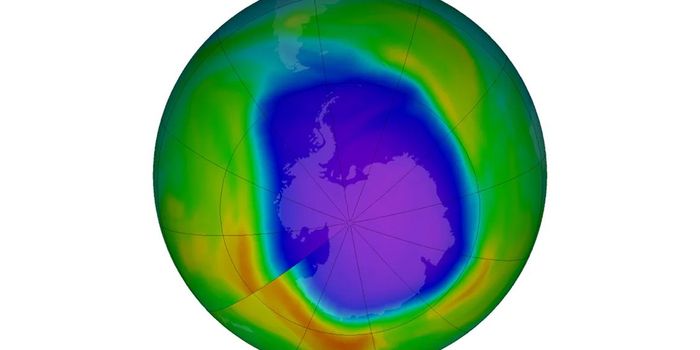A surprising new study out of Japan shows that the buildings destroyed and damaged by the 2011 Tohoku earthquake and the resulting tsunami released thousands of tons of chemicals into the atmosphere that significantly contributed to global warming and depleting the ozone layer.

Takuya Saito, lead author of the new paper and a senior researcher at the National Institute for Environmental Studies in Tsukuba, Japan found that the 9.0 magnitude earthquake and tsunami that struck Japan four years ago released 7,275 tons (6,600 metric tons) of gases into the atmosphere that had been stored in insulation, appliances such as refrigerators and air conditioners and other equipment from buildings that were damaged or destroyed.
Levels of these chemicals, as a group, called halocarbons, increased by 21 percent, 91 percent over typical levels, according to Saito's new study, which has been accepted for publication in American Geophysical Union's journal: Geophysical Research Letters. It is the first study to look at the atmospheric effects of the Tohoku earthquake and one of the first to examine the atmospheric effects of a natural disaster. "What we found," says Saito, "is a new mechanism of halocarbon emissions coming from the earthquake."
One reason for the dramatically negative effect on the atmosphere of these released halocarbons, especially in terms of their negative impact on the ozone layer, is that most of the gasses released have been banned because of their intensely deleterious effect on the atmosphere. These gasses include chlorofluorocarbons like CFC-11, a powerful ozone depleter that was used in foam insulation until it was phased out in 1996 and hydrochlorofluorocarbons like, HCFC-22, an old refrigerant that was used until it was also found to be a powerful destroyer of the ozone layer and a powerful greenhouse gas. Other halocarbons released by the earthquake included hydrofluorocarbons, or HFCs, and sulfur hexafluoride, both of which are potent greenhouse gases. The six halocarbons released over Japan in 2011 were the equivalent to releasing the refrigerant from 2.9 million old refrigerators and about 10 percent of Japanese vehicle emissions from all of 2011.
Saito and his team were alerted to this phenomenon when ground-based air monitoring stations on Hateruma Island, east of Taiwan, at Cape Ochiishi, on the east side of Hokkaido; and at Ryori, north of Tokyo on Honshu recorded remarkably high levels of these halocarbons. That's when Saito and his team decided to investigate further. They confirmed these readings and then compared them with readings from several years before the earthquake, as well as the ongoing impacts over the past few years.
The Study also quantifies the total impact of emissions from the earthquake on ozone depletion and global warming. Saito and his team's findings were that there was a 36 percent increase in the amount of heat trapped in the atmosphere from March 2011 to February 2012. The Tohoku earthquake accounted for about 4 percent or less of global emissions in 2011.









